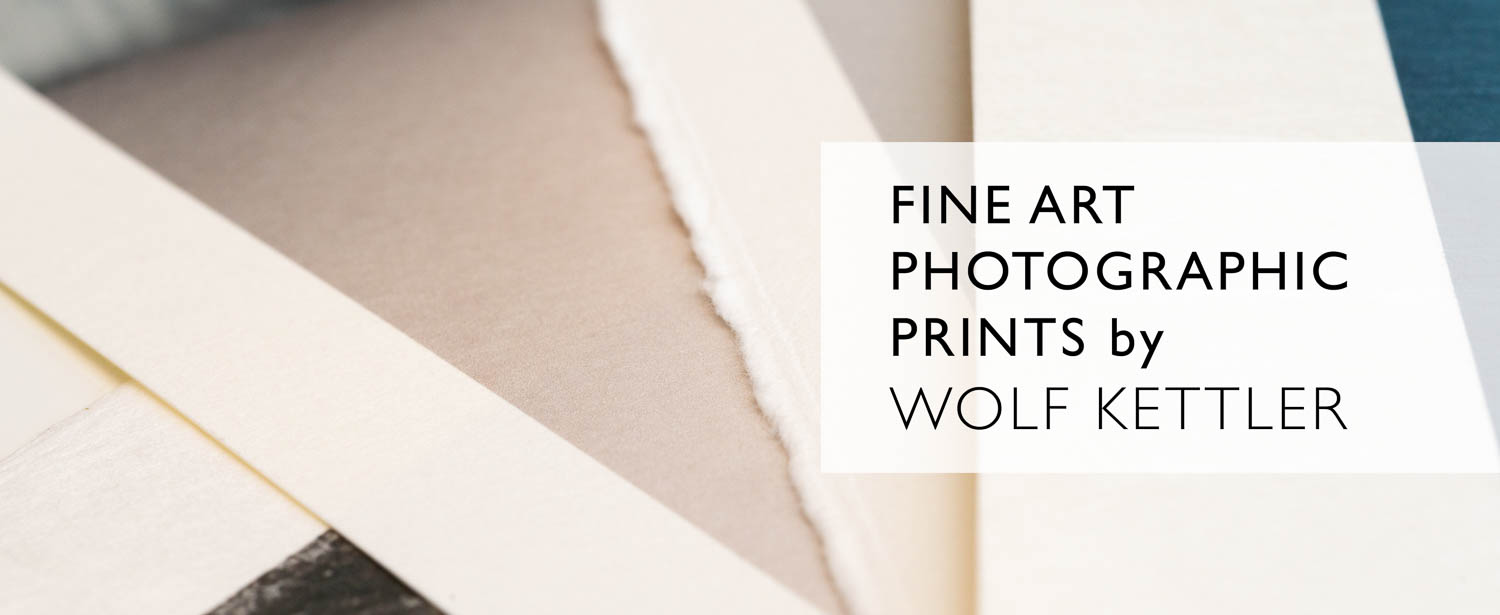where to buy
Hand crafted limited edition prints are available to buy from Saatchi Art.
Select an artwork, click on an image to see it bigger and hover your pointer over it to bring up the description and the buy this print link. You can also go straight to Saatchi Art and select a print to buy.
Exhibition quality Prints
My works are available to buy as exhibition-quality limited edition prints. The prints are crafted individually in-house by myself, using the finest archival quality photographic materials. Every print an original.
Limited Editions
Limited edition prints are produced in a set size (number of prints), print and paper size, and paper type. Collectors can be assured that the number of reproductions is restricted. Prints are numbered and signed by myself and accompanied by a Certificate Of Authenticity.
Whilst all images on this website are watermarked, prints are, of course, never watermarked.
Papers, or:
East vs. West
In Western culture we have little appreciation of the qualities of paper. We usually only notice whether it is bright or off-white, thick or thin, shiny or matt, and possibly smooth or rough - if we notice anything at all.
Today, almost exclusively cotton is used for making Western style paper. Whilst very beautiful paper can be made from this material, the fibres from cotton are short and tend to produce paper lacking internal strength. Inevitably, it is necessary to produce thick, heavy and cardboard-like papers. This is what in Western culture we have come to think of as “good” paper.
By contrast, traditional Japanese papermaking uses fibres — in particular Kozo — that are much longer. This produces elegant paper that is thin, crisp and delicate yet very strong. It was only when I learned how to make paper that I realised that the techniques for making thin papers show the real skills of the papermaker.
I believe that the paper, which carries a work of art — a drawing, painting, photograph, even writing — influences the way, in which we experience the work. It is not just a supporting medium in the background but becomes a physically and intellectually inseparable part of the finished object. The delicate-yet-strong paradox of papers made in the Japanese tradition draws a parallel to our home, planet Earth, and also the (ageing) human. It is this understanding that makes thinner paper manufactured in the Japanese tradition often the right material to print my works on.
Offering prints on thinner Japanese papers is in some ways challenging the Western preconceptions and asking the buyer of a print to consider the characteristics of quality with an open mind.
An unintended consequence of learning how to make Japanese paper and discovering a love for it is the fact that I now find many (not all) Western manufactured papers too sterile and far too cardboard-like.
Delivery
A print on Awagami Kozo Thick White paper wrapped in glassine in a prints box (left; on top) and an as yet unprotected print in a Prat Paris Kraft Portfolio (right; beneath).
Each print is protected using glassine sheets. Glassine is easier to handle than the commonly used polyester and infinitely more kind to the environment. Glassine is pH neutral and typically used in bookbinding for interleaving pages containing artwork. Thus protected, prints are then placed in a high quality prints box or a Prat Paris Kraft Portfolio so that they can be shipped flat.


